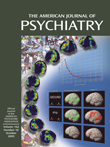The topic is worthy, but this book is not a quick read for the clinical psychiatrist. The disquieting message is that we need to be much more concerned with the effectiveness of adult patients in their role as parent in an effort to prevent psychopathology in the next generation. This public health perspective is superimposed on the multilevel, individually focused symptomatic, psychodynamic, neuroanatomic, molecular, and pharmacological clinical care with which the clinician is already struggling.
Twenty-seven chapters written by 32 authors, mainly from the United Kingdom and Australia, are grouped under six headings: Basic Issues (e.g., children’s view of the parent’s psychiatrist and parental disorder and its effect on attachment), Comprehensive Assessment and Treatment (the mentally ill mother in a parenting role), Specific Disorders: The Impact on Parent-Child Relationships (schizophrenia, alcoholism, drug abuse, affective disorder, personality disorder), Specific Treatments and Service Needs, Child-Sensitive Therapeutic Interventions, and Models for Collaborative Services and Staff Training. The presence of clinical vignettes in 12 of the chapters made me wish for the same in all. Lacking is any focus on childhood illnesses such as autism, obsessive-compulsive disorder, or school phobia, which affect the parent’s morale or sense of competence.
On rereading the volume, I grasped the message that I and all other mental health providers should consider many perspectives simultaneously—the disordered patient, his or her parental role, the state of the children in the family, role reversals, a supportive network for patient and family, and community agencies and their coordination.
There is no explicit bridging mode to lead the reader from one chapter to the next. Samples of what I found interesting in parts 1 and 2 include the following: Children want to be included to some degree when a professional makes an assessment of a troubled parent for whom the youngster may have to take some responsibility. “Protective factors” for the mental health of children that can be reinforced by an adult health professional are described in a table. A Boston study revealed that in “84% of abused child cases, one or both parents suffered a psychiatric disorder or had IQs less than 80.” A study by one of the editors, Göpfert, and his associates noted the recurring inability of psychiatric personnel to assess the impact of mental illness on the role of the parent and to validate the parent’s residual function in that role. “60% of mothers with mental disorders relinquish or lose custody of their children.” An intervention to improve mother-infant attachment, even when threatened by parental mental illness, can reduce the likelihood of the child’s developing insecure-disorganized attachment.
The attention of the clinician reader picks up in part 3 with the focus on parent-child behavior by diagnosis. For example, a mother with bipolar disorder who had three children had care provided by so many professionals (a “multi-agency family”) that there was little parenting left to her. Study data indicate that about 50% of women with schizophrenia become parents and that about half of these women retain some custody with the help of grandparents and with a relationship characterized by low mother-infant interaction. The authors of one chapter conclude from a literature review that a child’s insecure attachment is predicted less by parental depression per se than by the quality of the postpartum parent-child interaction. Children of alcoholic parents may have to take over parenting roles at an early age, but they do not have more substance abuse or adjustment problems than the general population. The case is made that the majority of women in substance abuse treatment who have children drop out of treatment because of lack of proper child care. The parents’ personality disorder and their likely story of childhood trauma or poor attachment experience with their own parental figures lead to great difficulty in offering a secure attachment experience to their own children, who subsequently will have trouble giving effective care to their offspring. This theory makes a compelling case for collaboration of adult and child treaters to break the cycle.
On the legal front, the authors in part 4 refer to a U.S. study finding that 70% to 80% of parents with mental illness lost custody of their children, but in the next chapter, which deals with international comparisons, the European emphasis on support for parents in their parental role functioning is emphasized.
The chapter in part 5 by Denise Roberts on growing up in a disturbed family gives a poignant account of “becoming mindless” as a survival defense when normal adult attention is lacking. Family therapy is presented as having developed from “promising a cure” to helping members become more effective and less intrusive in problem solving.
The closing chapters in part 6 center around international models of care that integrate concerns for children into adult models (an interesting example from Australia includes the Child Risk Checklist). The U.K. model of Crossing Bridges gives elaborate training material to address the needs of mentally ill parents and their children, integrated across multiple levels of service and training of professionals. Outcome assessment of this noble endeavor thus far seems to be lacking.
Each of the 27 chapters is followed by a comprehensive list of references. This book can serve as a compendium of related articles that are an excellent resource for individual practitioners who need to be mindful of other generations within the emotional sphere of their patients, for training programs that need to enhance their public health reach across generations, and community mental health administrators trying to minimize the proliferation of psychopathology from one generation to the next.

